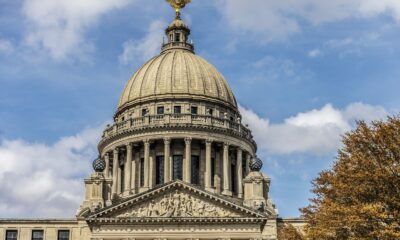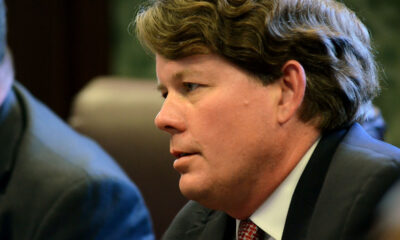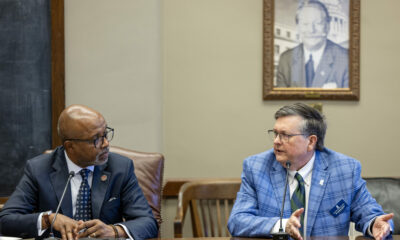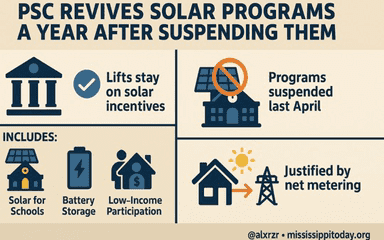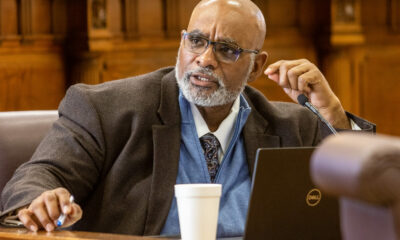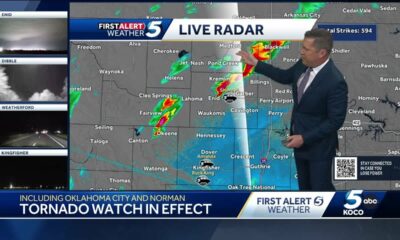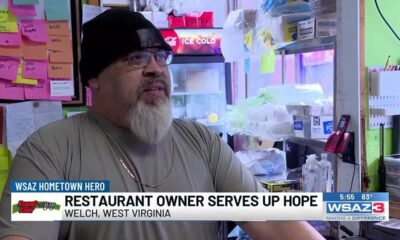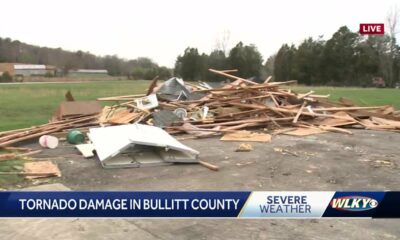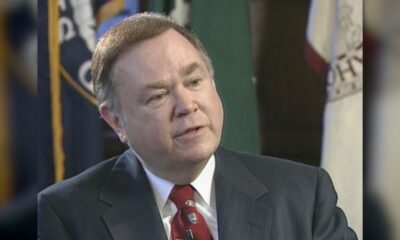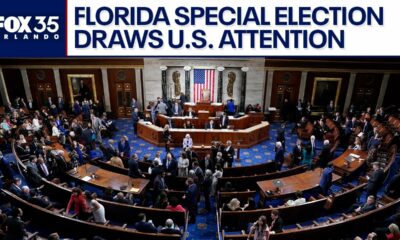Mississippi News
How Mississippi schools are using federal funds
How three Mississippi school districts are spending $207 million in federal relief funds
Flush with $2.3 billion in federal pandemic relief funds, school districts across the state are working to spend them on infrastructure improvements, technology, and catching up on learning lost in the pandemic.
The Elementary and Secondary School Emergency Relief (ESSER) Fund was created initially by the Coronavirus Aid Relief and Economic Security (CARES) Act and then subsequently replenished in two other pieces of federal legislation, creating three separate pots of money for the state and districts to spend.
READ MORE: How much pandemic relief funds has your school district spent?
Mississippi Today reviewed the spending plans and spoke to local officials in three school districts which collectively received roughly $207 million: the Jackson Public School District, Ocean Springs School District, and Starkville-Oktibbeha Consolidated School District. Across the districts, the major spending themes are reopening schools safely, learning loss recovery, and infrastructure improvements.
A national analysis of district spending plans by FutureEd, an education policy think tank at Georgetown University, found that districts with higher poverty levels are receiving significantly more ESSER dollars per student, nearly 10 times more when comparing the highest and lowest poverty districts. FutureEd said this difference stems from Congress allocating the funds using the Title I funding formula, which distributes federal funding to schools based on the number of low-income students enrolled.
FutureEd also found that the higher the poverty rate in a district, the more likely administrators were to allocate money to heating, venting, and air conditioning (HVAC) updates and purchasing new instructional materials.
For example, in the Jackson Public School District, every school is budgeted to receive HVAC renovations, which are also often accompanied by window replacements or roof repairs. Chief of Staff William Merritt explained that these additional repairs are necessary to ensure that the new HVAC systems can run effectively.
Merritt said it would have been ideal to be allowed to use the federal dollars for building new facilities, since the district’s aging infrastructure means that repairing one problem often means finding another, but “that’s something that we can’t necessarily do at this time,” referencing the federal regulations that limit new construction.
Statewide, districts are using, on average, nearly half of their money from the third and largest pot of federal dollars on infrastructure. Most of it has gone to HVAC upgrades, buses, outdoor learning spaces, bathroom upgrades, technology, and new floors.
All three of the districts Mississippi Today spoke to are investing in HVAC upgrades. Leaders said these upgrades are a good preventative measure against airborne diseases like COVID-19, and a needed long-term investment because many buildings have outdated units.
District leaders also explained that the influx of federal dollars has created a supply and demand problem for contractors and parts. Coupled with the national supply chain issues, upgrades have been more costly in some cases and districts are pressured to get all of their projects done on time.
National leaders have recognized this pressure, giving states the ability to apply for extensions up to 14 months past the original deadlines. Since the funding came in waves, the spending deadlines do as well. The deadlines to have the money obligated for each pot are Sept. 30 of 2022, 2023, and 2024, but a grace period is built in that gives schools a few extra months to disperse final payments. Per the new extension option that is available, these initial deadlines to award contracts will still be in place, but the grace period to make payments on those contracts has been extended.
The Mississippi Department of Education confirmed that they are applying for an extension on the first round of federal funding.
The first pot of money, which districts began receiving in the summer of 2020, was targeted to reopening schools. It was used to make a significant investment in sanitation, initially meeting the immediate need for masks and cleaning supplies, later purchasing disinfectant sprayers with additional funding.
Anna Guntharp, assistant superintendent in the Starkville-Oktibbeha Consolidated School District, said that initial emphasis on personal protective equipment came from Centers for Disease Control and Prevention guidance, but that they have found it to be a good practice to keep generally even as public understanding about how COVID spreads has changed.
“There’s always a risk of transmitting viruses of any kind in a school,” Guntharp said. “Going forward, during flu season or even common cold season, we want to keep our kids safe. I think it was still money well spent even post COVID-19.”
Reopening efforts also included significant purchases of technology. The push to get each student a device saw significant support from the Legislature and Mississippi Department of Education, but districts also spent millions on laptops, tablets, video conferencing cameras, improving broadband connectivity, licensing virtual learning programs, and digital textbooks.
This investment in technology has long-lasting benefits for the students in the Jackson Public School District, according to Merritt, the chief of staff. The district, which often struggles with school closures caused by water pressure issues, will now be able to pivot to virtual instruction for other circumstances outside of a spike in disease transmission to avoid lost school days.
Extending instructional time is a key tactic to addressing the national decline in student achievement since 2019, frequently referred to as pandemic learning loss. This decline is one of the major focuses of the federal funding, with Congress creating a requirement for the third and largest pot of money that at least 20% must be spent addressing learning loss.
Districts are primarily pursuing two methods to address this decline: interventionists to work directly with students on concepts they’re struggling with in their larger classes, and after school and summer school programs to increase classroom hours.
Tonya Bolton, director of federal programs for the Ocean Springs School District, said the district has been analyzing data for each school to determine individualized areas of need, focusing on concepts from earlier grades that students may have missed and getting them up to grade level. Bolton said internal data shows their efforts have been effective enough that they may continue to invest money in having interventionists even after the federal funding runs out.
Guntharp said approximately 14% of students in the Starkville-Oktibbeha School District are currently working with interventionists, and the district is also looking for ways to afford retaining the ones they hired after the district runs out of federal funds.
Laura Anderson, associate director of the Edunomics Lab, said increased per-student spending doesn’t always lead to better outcomes, which makes it crucial for districts to constantly evaluate the effectiveness of their learning loss recovery plans – a sentiment education researchers have also echoed in recent reports on district level learning loss.
“We have this infusion (of money); what are our kids getting for it?” Anderson asked. “And if we don’t think that we’re getting the results that we wanted for our kids, how do we pivot? Districts have to be told it’s okay to be nimble and to make those changes.”
This article first appeared on Mississippi Today and is republished here under a Creative Commons license.
Mississippi News
Ole Miss women get pair of double-doubles and roll to 83-65 March Madness win over Ball State
SUMMARY: Mississippi coach Yolett McPhee-McCuin found solace in returning to a different arena in Waco, Texas, following a disappointing previous tournament experience. The No. 5 seed Ole Miss Rebels redeemed themselves with an 83-65 victory over 12th-seeded Ball State in the NCAA Tournament’s first round. Starr Jacobs led the Rebels with 18 points and 11 rebounds, while Kennedy Todd-Williams and Madison Scott each scored 15 points. Ole Miss dominated rebounding, leading 52-32, and will face fourth-seeded Baylor next. Coach McPhee-McCuin noted the team’s evolution since their last visit and the significance of playing in Texas, where Jacobs feels at home.
The post Ole Miss women get pair of double-doubles and roll to 83-65 March Madness win over Ball State appeared first on www.wjtv.com
Mississippi News
Events happening this weekend in Mississippi: March 21-23
SUMMARY: This weekend (March 21-23), Mississippi offers a range of exciting events. Highlights include Hal’s Marching MALfunction Second Line Stomp and Jessie Robinson’s blues performance in Jackson, as well as the Natchez Food & Wine Festival and the Natchez Little Theatre’s production of *This Side of Crazy*. There are also numerous exhibitions like *Of Salt and Spirit: Black Quilters in the American South* in Jackson and *Gold in the Hills* in Vicksburg. Other events include the 48th Annual Crawfish Classic Tennis Tournament in Hattiesburg, karaoke nights in Laurel, and a variety of family-friendly activities across the state.
The post Events happening this weekend in Mississippi: March 21-23 appeared first on www.wjtv.com
Mississippi News
Events happening this weekend in Mississippi: March 14-16
SUMMARY: This weekend (March 14-16) in Mississippi offers a variety of events. In Jackson, iconic saxophonist Boney James performs at the convention center, while the JXN Food & Wine festival showcases culinary talents. The LeFleur Museum District hosts a “Week of Wonder,” and several exhibitions, including “Of Salt and Spirit,” celebrate Black quilters. Natchez features the Spring Pilgrimage tours, a reenactment of Annie Stewart’s story, and a St. Patrick’s Day celebration. In Hattiesburg, comedian Rob Schneider performs, and various events like a St. Patrick’s Day pub crawl and a talent show will take place throughout the area.
The post Events happening this weekend in Mississippi: March 14-16 appeared first on www.wjtv.com
-

 Mississippi Today3 days ago
Mississippi Today3 days agoPharmacy benefit manager reform likely dead
-

 News from the South - Oklahoma News Feed6 days ago
News from the South - Oklahoma News Feed6 days agoTornado watch, severe thunderstorm warnings issued for Oklahoma
-

 News from the South - Georgia News Feed6 days ago
News from the South - Georgia News Feed6 days agoGeorgia road project forcing homeowners out | FOX 5 News
-

 News from the South - West Virginia News Feed7 days ago
News from the South - West Virginia News Feed7 days agoHometown Hero | Restaurant owner serves up hope
-

 News from the South - Kentucky News Feed4 days ago
News from the South - Kentucky News Feed4 days agoTornado practically rips Bullitt County barn in half with man, several animals inside
-

 News from the South - Oklahoma News Feed5 days ago
News from the South - Oklahoma News Feed5 days agoLife of David Boren memorialized in ceremony attended by hundreds
-

 News from the South - Florida News Feed6 days ago
News from the South - Florida News Feed6 days agoRepublicans look to maintain majority in Congress ahead of Florida special election
-

 News from the South - Alabama News Feed3 days ago
News from the South - Alabama News Feed3 days ago'I think everybody's concerned': Mercedes-Benz plant eyeing impact of imported vehicle tariffs



